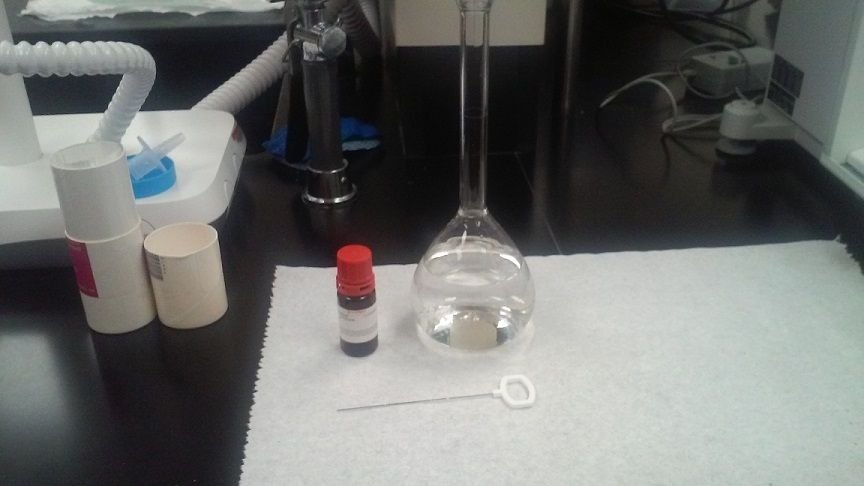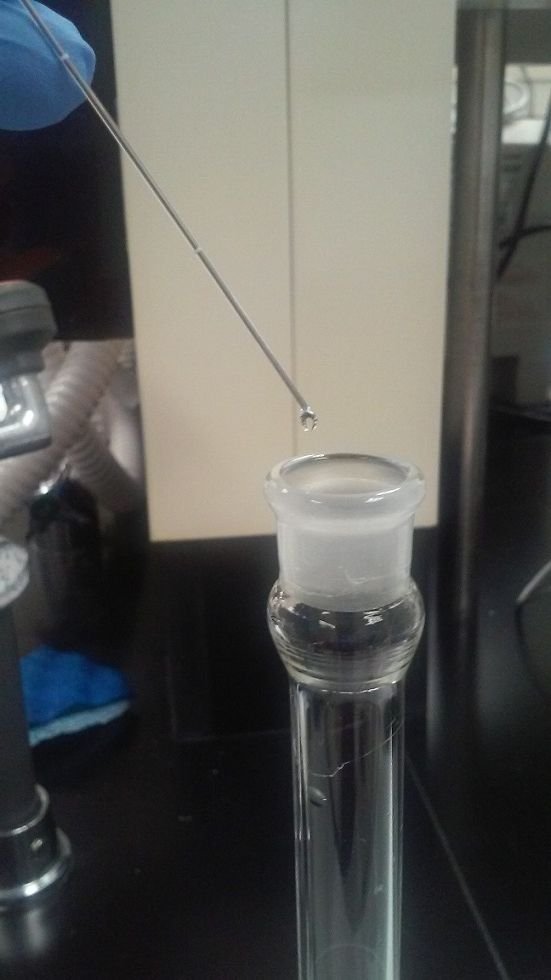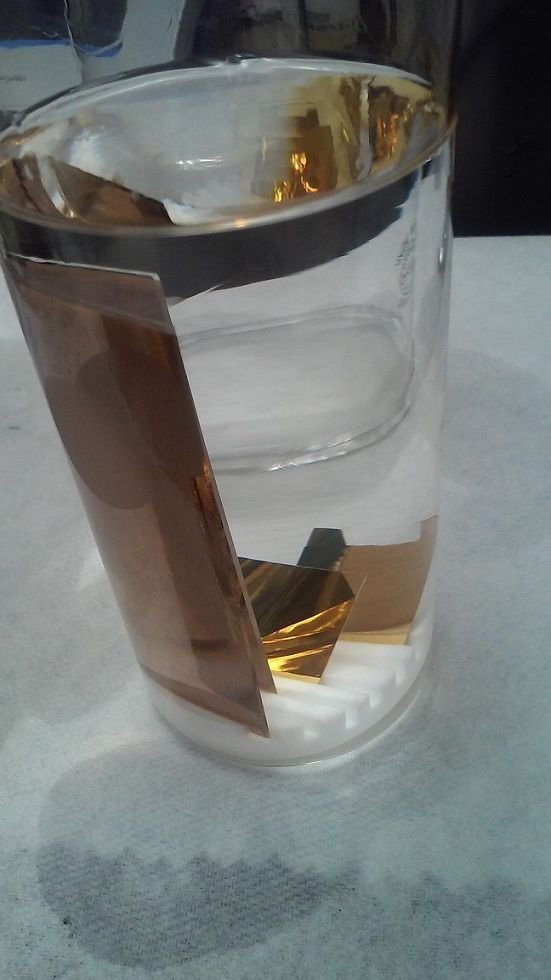I started continuing my work on a project that may result in new filters to rid our water of estrogenic compounds. I will try to report every day about work that I have done in the lab. With this I am hoping to get people a better understanding of what being a laboratory scientist looks like.
The science of today, is the technology of tomorrow.
-Edward Teller
Two Hours Just Flew By
It was a very short day in the lab today. All I did was calculate how much of my chemicals I need to mix with ethanol to make my deposition solution, set up the deposition solutions and place my substrates in there. Sounds very easy, however, the substrates are very difficult to handle.
Once I calculated how much MUAM and 1-Dodecyne I needed, I started measuring out 0.006g of MUAM and 0.0055mL of 1-Dodecyne.

This is the analytical balance I used. It is very sensitive and can detect small changes like when a powder absorbs tiny amounts of water vapor. The 1-Dodecyne I could not just weigh out because it is a liquid and it is way easier to just calculate the volume needed and measure that out. In order to do that, I just calculated the mass needed, and divided the mass by the density of 1-dodecyne, which is given by the manufacturer. The volume I needed to make up a 250 mL solution of 0.1 mili Molar solution was 5.5 micro liter. Luckily 0.1mM is a very concentrated solutions (100 times as much as we theoretically need to cover our gold substrate) so I could just use a little glass rod, which is designed to hold five or ten microliter.

It is very easy to use. The result, however, reminds me of the famous "drop in the ocean". See fo yourself.

I then shook both solutions and sonicated them. Sonication is a technique where you place glassware that is filled with chemicals into a water bath. The sonicator then vibrates at really high frequencies. The vibrations are causing the chemicals inside the glassware to vibrate at very high frequencies also. This causes particles to break into smaller particles, which dissolve more easily. We want to produce layers that are tightly packed, and particles can cause significant defects in the packing of the SAM.
Once the solutions were ready, I took the gold slips I cleaned yesterday, and put them into a deposition vessel. I then filled the vessels with the deposition solutions and sealed everything air-tight. It was very difficult to arrange the little glass cover slips, even with the Teflon carrier that we designed. The result, however, is kind of beautiful.

Everything was placed in a fridge. Tomorrow I will do IR spectroscopy with the MUAM covered substrates. The 1-dodecyne substrates (probably) need a little bit more time. We honestly do not know much about the deposition of alkynes onto gold substrates. In the next few weeks, we hope to determine the alkyne-gold bond strength using electrochemistry.
We also hope to be able to identify the alkyne carbon-carbon vibration in our IR absorbance spectrum. This is one of the main reasons we are using GATR. The intensities one can achieve with external reflection IR spectroscopy are nowhere near GATR.
All of this took me two hours, which I did not even realize. Afterwards I met with my supervisor and we tried to computate absorbance spectra using a software developed by the patent holder of the GATR technology.
I am really enjoying writing this series. It gives me time to reflect on my work and understand why I have done what I did.
I want to thank you for following me on this journey.
Leave your questions in the comments!
Cheers @lesshorrible!
